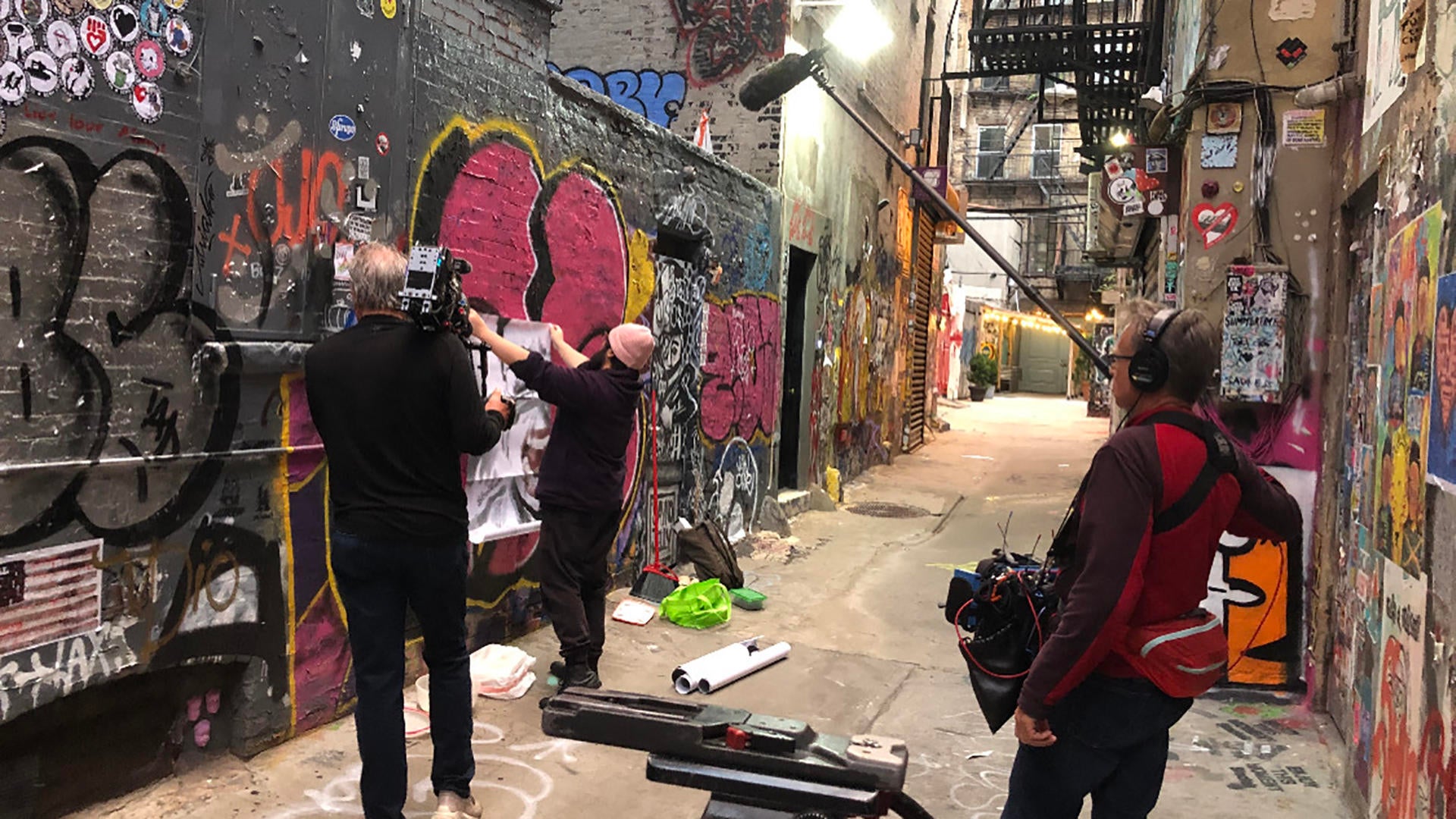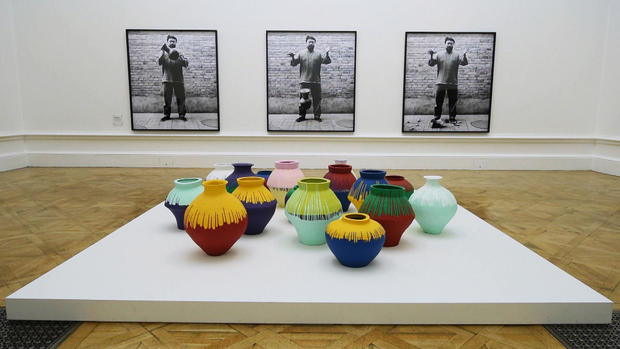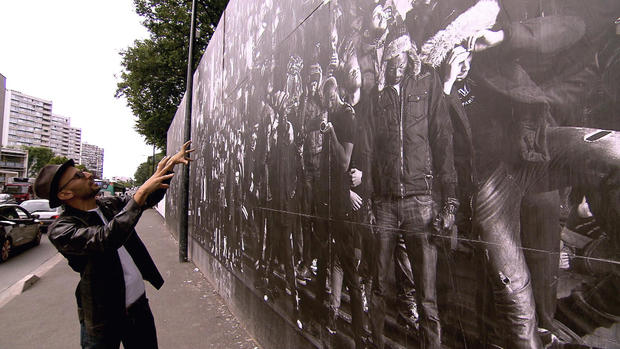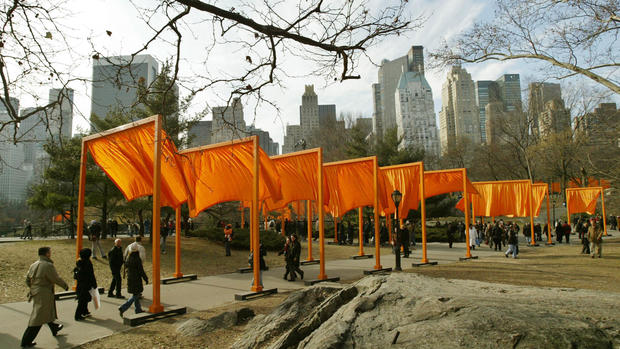
Sometimes artists create works that are bold enough to make the world — and "60 minutes" — Stop and be careful.
Just as the media is different, the artists profiled by "60 Minutes" have different perspectives on the meaning of their work. Some artists believe that art is nothing more than beauty. For others, being an artist means being an activist.
This week, correspondent John Wertheim spotlights theChinese cartoonist Badiucao.When China hosted the 2022 Winter Olympics, Buddy Uzao wanted to give the world a visual debate as to why his home country was not suitable for hosting the game. is.
Badiucao, who is currently in exile in Australia, says criticizing the Chinese Communist Party can have serious consequences outside of China. I know. That's why he goes through Badiuzao. The pseudonym he says is meaningless.
But no matter what you call him, Badiucao's art has exacerbated the Chinese government.
"I think it's this attitude that doesn't care how serious and dangerous you are," he told Wertheim. "I'm just going to be myself. I'm an individual. I'm not controlled by any authority. Certainly not a CCP. It scares them. What they want is perfect. Because it's just domination. "
All types of art are the basis of the 60 Minutes report over 54 seasons of broadcasting. Here's a look back at some of the other artists who featured the work of "60 Minutes."
Multimedia abstract painter Mark Bradford
Calling Mark Bradford a painter is a bit of a misnomer. His large work may look like a painting, but there is little paint. Instead, they are made from layers of paper that he tears, glues, powerwashes, and sands all in his own style.
In 2019, 60 Minutes correspondent Anderson Cooper introduced Bradford, an abstract artist who often deals with complex social issues. His work, Deep Blue, now on display at the Broad Museum in Los Angeles, makes a 50-foot-long statement about the 1965 racial riots in the Watts district of Los Angeles.

"I'm working on how I feel about the subject and the material," Bradford told Cooper in the 2019 broadcast. "I'm working on things. I'm working on things personally, racially, and politically. What do you mean by me?"
In response, Bradford created paintings from street posters, including those offering predatory lending in low-income areas, addressing HIV / AIDS, racism, and the complexity of American history. I created a work to do.
Bradford used his art to speak about society, so he told Cooper that he didn't mind keeping his popularity in the art world.
"I'm not waiting for someone to tell me that my work is worth it," he said. "I certainly didn't mean to wait for people to say I'm worth it. I'm probably still waiting. It's worth it because I think it's worth it. And others are worth it. If you get, you know, Mark Bradford Value Train, great. "
Chinese activist AiWeiwei
Like Bradford and Badiucao, Chinese Dissident Ai Weiwei believes art should speak.
"I think all art is political if it's relevant," Ai told Holly Williams during a 60-minute interview in 2017.
As Williams reported, Ai is the most successful contemporary artist in the world. He is a designer, sculptor, photographer and blogger who has gained fans by using his art to ridicule authority and make social statements. Looking at the plight of refugees in recent years, Ai created an installation from the abandoned clothes and shoes left by those fleeing to Europe. He packed an immigrant life jacket in a pond in a museum in Vienna.
But in China, the art of love harassed him by police, detained him, and even expelled him abroad.
"I think artists and activists are the same," Ai said. "As an artist, you must always be an activist."

French photographer JR
French photographer JR may not be immediately recognizable by image or name. , His huge photo is probably so. He has appeared in about 140 countries around the world. With an oversized photo, JR wants his art to make a statement about everyday people.
What does he want to say? "They exist," he told Anderson Cooper.
A photo of JR's face was pasted on the rooftop of a slum in Nairobi, a building in Istanbul, a sidewalk in New York City, and a Tunisian police station looted in the Arab Spring. Images of Israel and Palestine are pasted side by side on the wall that separates the territory of Israel and Palestine.
JR often photographs people who are otherwise often overlooked or who are in a position to be outsiders of society. He told Cooper that he wanted people to see the humanity in the subject of the photograph.
"When I see those faces, I want to smile," he said. "By playing monsters, they no longer look like monsters."

Christo and Jeanne Claude
For the couple team Christo and Jeanne Claude, art was only impressive. look. As a result, they did not issue a statement when they set up about 7,500 gates in Central Park, New York City in 2005, each raising a saffron-colored flag.
"It's just'The Gates', a work of art of joy and beauty," Jeanne Claude told correspondent Morley Safer at the time. "We don't create a message. We don't create a symbol. It's a work of art and nothing else."
The couple didn't have a message, They often had to struggle to create their art. In Germany, he fought six successive presidents to get permission to wrap the Capitol in metal cloth. In France, he fought Jacques Chirac for ten years and eventually allowed Pont Neuf, the oldest bridge in Paris, to be wrapped in a silky golden cloth. At one point, the pair installed 3,000 giant umbrellas outside of Los Angeles and Tokyo at the same time.
"Christos is a two-headed natural force of obsession," Safer reported in 2005.
Jeanne Claude died in 2009 and Christo died in 2020.

Thank you To read CBS News.
Create a free account or log in to
to take advantage of other features.


